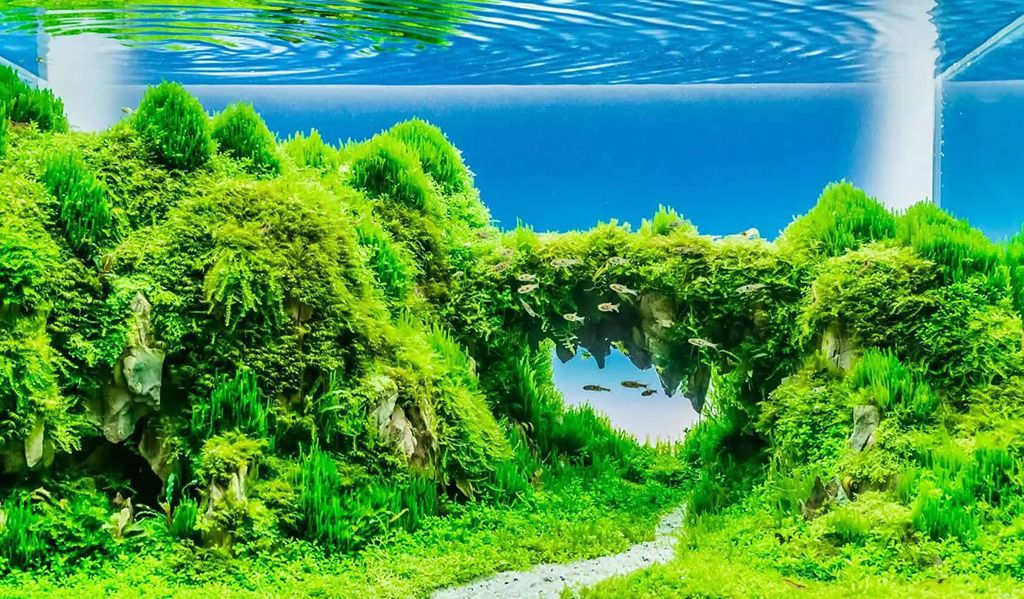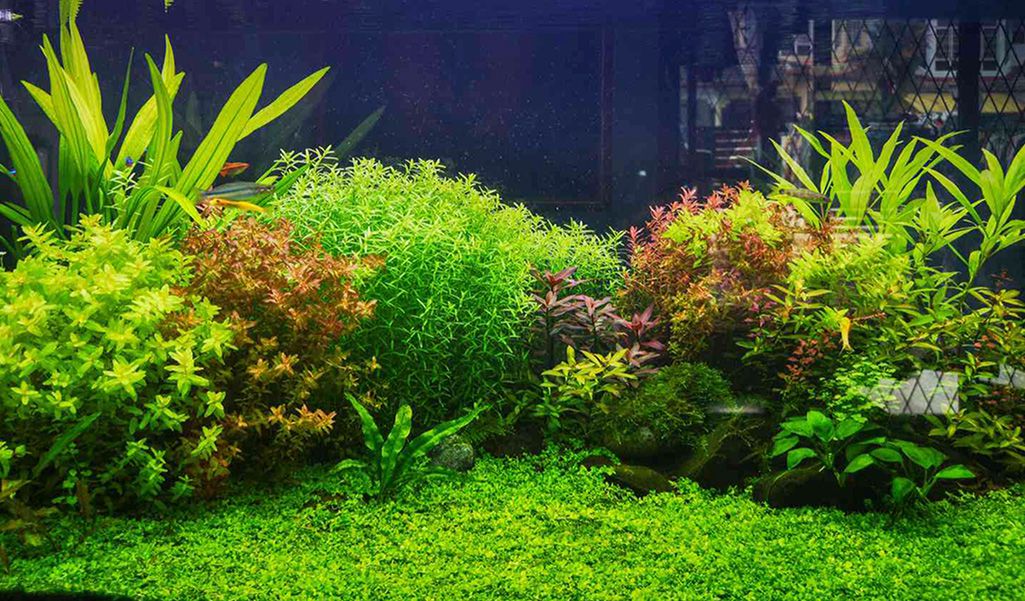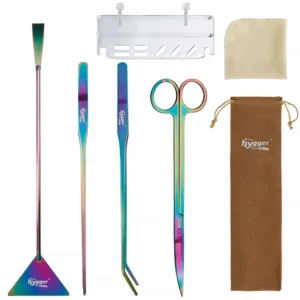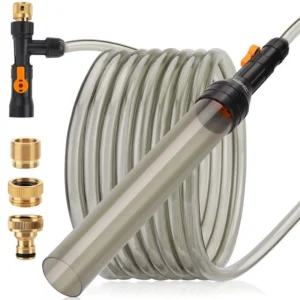Facing algae, films, or cloudy water in your planted aquarium, what should you do? Cleaning the whole tank completely? Or clean the aquarium partially? It depends on the fish tank status. If your planted tank has been set up just for a few weeks, generally, there is no need to clean the whole tank thoroughly. Because the tank may be still finding balance. In this article, let’s take a look at residential aquarium maintenance.
Content Table
Features of residential planted aquariums
What is a planted aquarium? It is a tank that mainly consists of aquatic plants. And it requires your attention to the tank size, aquarium lighting, substrate, plant species, or others. In general, light plays a critically crucial role in the photosynthesis of plants. Light also affects plants’ colors and growth. Besides that, you should provide a proper substrate. For instance, sand, gravel, or aquarium soil. As plants need something to root. Also, aquarium soil can be a nutrient source for aquatic plants. In addition, carbon dioxide is significant for plants. CO₂ deficiency will limit plant growth.
Clean live aquarium plants
Seeing that dirt, algae, or something like these may grow on aquatic plants, which can be damaging to plants. As a result, plant cleaning would be critically crucial. In this segment, we will share some tips about cleaning live aquarium plants.
Scrub tools
Cleaning the live aquarium plants with scrub tools is a great alternative. Available scrub tools include a toothbrush, scrubber, algae cleaning pad, or others. Also, one tip here – the tools you use should be only for plant cleaning.
Vinegar
Featuring great cleaning properties and less harm, vinegar can be used in aquarium plant cleaning. Usually, you should soak the plants for about 15 minutes. And then do not forget to rinse them.
Potassium permanganate
Potassium permanganate is helpful in removing algae, bacteria, or fungi from aquarium plants. Just add 20 mg of potassium permanganate to one gallon of water. Then soak the plants for about 5–15 minutes, and then rinse them.
Bleach
Bleach should be the last choice, because it may harm plants for improper use. In general, you should follow the rule – two tablespoons of bleach for one gallon of water and soak the live aquatic plants for about 2–3 minutes. After that, remove algae from the plants and rinse them.
Aside from all mentioned above, hydrogen peroxide, aquarium salt, or tap water are also great options.

Substrate maintenance of planted aquarium
The substrate consists of sand, gravel, aquarium soil, or others. Aquatic plants and tanks require proper maintenance, the same goes for the substrate. This part will talk about substrate maintenance of planted aquariums.
Before use, you should rinse the substrate to remove dirt until the water is clean. As for substrate maintenance, it is best to clean it regularly, including removing dead plants, uneaten food, fish feces, or other debris. In this case, an aquarium gravel cleaner will help you a lot. With a strong water flow of up to 360 GPH, it can suck out debris and waste from the aquarium quickly. Besides that, you need to replace the aquarium soil sometimes when plants exhaust their nutrients. Additionally, if your aquarium has heavy plants and uses the sand substrate, you can go to How to Clean Sand in a Heavily Planted Aquarium for more suggestions.
Residential aquarium maintenance guide
To keep your residential planted aquarium healthy, it is necessary to do regular maintenance, like water change, plant trimming, filtration system maintenance, and others. Given below are some guidelines for maintaining planted aquariums.
Nutrients
Adequate nutrients are beneficial for plant growth, which also makes aquatic plants more brilliant. You should supplement nutrients once per day or once every other day. Generally, plants absorb nutrients through their roots. For example, micronutrients, including iron, magnesium, chlorine, and others. You can supplement micronutrients by adding plant fertilizers. Additionally, a vitamin supplement is also essential. For instance, vitamin C can adjust the pH level, while vitamin B12 is helpful to germinate aquarium plants.
Carbon dioxide
Additional carbon dioxide is essential for planted tanks. It helps to improve the health and growth of your plants. Facing carbon dioxide shortage, plants would appear pale leaves, and pale stems, and grow slowly. You can add carbon dioxide to a planted aquarium by using a pressurized gas tank, a DIY yeast reactor, or a CO₂ injector.

Aquarium light
Aquarium light should be taken into account, including lighting hours and brightness. Because too much will lead to algae thriving. Usually, it is recommended to keep your light on for about 8–12 hours per day. To take low-light plants as an example, 3 or fewer watts of light per gallon of water and 50–80 lumens per gallon in the aquarium are recommended.
Water test
Besides, monitoring the water parameters is necessary, including the pH, nitrite, nitrate, water hardness, and other levels. In marine aquariums, an aquarium hydrometer will help you test the salinity and specific gravity. If the levels are out of ideal ranges, you can adjust by adding filter media or doing water changes.
Water change
Regular water change helps to keep great water quality. You can change 15-30 percent of water once a week. For this case, using a siphon pump is convenient. It can be used for gravel and sand cleaning, dirt removal, as well as water changing.
Algae removal
Algae may grow on the surface of plants, substrate, aquarium glass, or other objects in your aquarium. You can keep the useful algae and remove the harmful algae in time. Or it would be a risk for your tank. Magnet scrapers and other aquarium cleaner tools will help you out, like flat sponge cleaner, right-angle sponge scraper, and razor blade long scraper. Additionally, you should keep the inside glass clean.
Health check & Plant trimming
You should check whether there are damaged or yellow leaves and holes in the leaves. Then you can make adjustments in time. On the other hand, when it comes to planting trimming, curved scissors will give you a hand. You should trim the decaying or dead leaves or plants. Also, plants that grow too high should be pruned. Furthermore, you should control plants on the water’s surface. Otherwise, too many plants on the surface would cause low light penetration.
Filtration system maintenance
It is best to check the flow rate of your aquarium filter. If it has a slow flow rate, you can rinse or replace the filter media. Commonly, you should clean your filter once a month. Choose the right filter media for your aquarium via Which Fish Tank Filter Media Should You Get.
Reminder
There are low-light, medium-light, or high-light plants. However, low light does not mean that plants do not need light. Exactly, low-light plants are those that require the minimum light to survive in aquariums, like java moss, java fern, and Amazon sword. That’s it. For more other ideas about residential aquarium maintenance, welcome to share them with us in the comment. We’re happy to receive your sharing. Finally, thanks for your reading.



Leave a comment